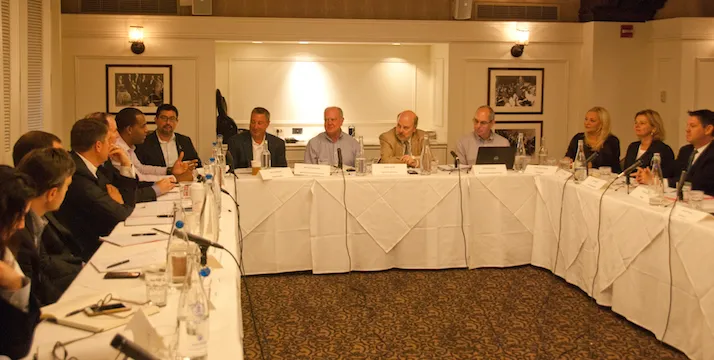NEW YORK — The increasing complexity of today’s consumer is making it ever more difficult to tailor stores to shoppers, retailers and suppliers said at the 2016 Chain Drug Review Category Management Roundtable in Manhattan.
Conducted in tandem with Market Performance Group (MPG), the roundtable featured 20 executives representing the retailer and supplier viewpoints. Panelists addressed issues ranging from the rise of self-care and impact of digital media on brick-and-mortar stores to the increasing prominence of Millennials, personalization, loyalty programs and retailer-supplier relations.
The discussion was moderated by Jeffrey Woldt, editorial director for Chain Drug Review and vice president at Racher Press Inc., and MPG’s Bob Candelora, chief executive officer of retail insights; Marc Greenberger, managing partner; and Dave Van Howe, senior vice president and retail advisor.
A concomitant challenge, said Liz Huntley, senior director of merchandising transformation and category portfolio strategy at Walgreens, is making sure different shoppers are being targeted in an authentic way. Retailers have to get away from just checking the box and putting products on a shelf for a particular group, she said.
To that end, they must improve data analytics so that they “understand exactly who that consumer in the store is,” she said. “It’s something that we need to do on an ongoing basis, and work on with all of our partners, to make sure that we understand how we can meet consumers’ needs.”
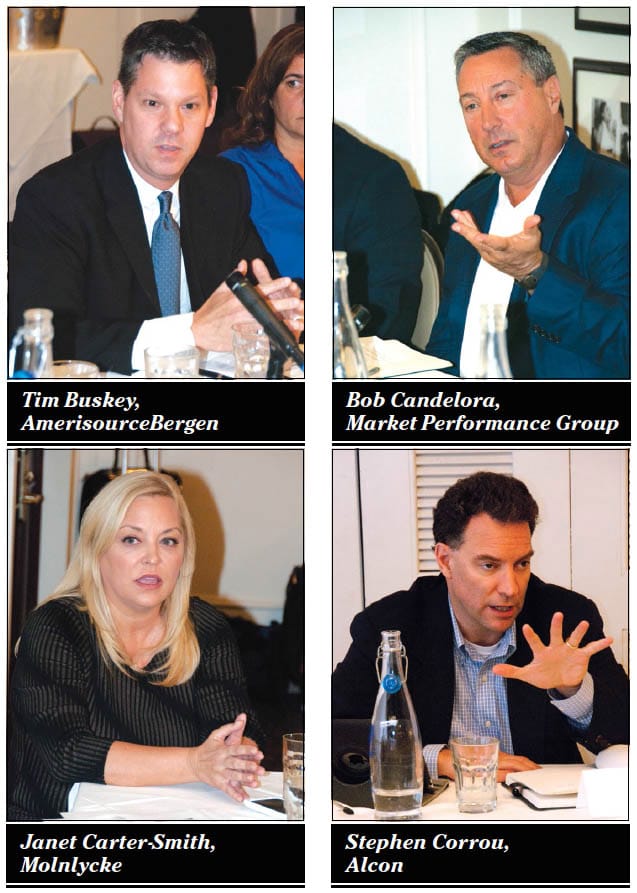
Rich Gallucci, senior vice president of sales at Sundial Brands, called for “breaking down the walls” — and not just in beauty, but “across the store.”
He cited Mariano’s for its “amazing” ethnic food presentation. “They have 52 countries lined up, where you can find almost anything you want. What they did is build the concept of specialty across food. This is how you grow categories by addressing and creating needs.”
Challenging retailers to “think differently,” Gallucci said “takes some big thinking in senior management to start looking at the wall as just a part of the whole; the store is viewed as the whole, and we don’t work on defending ‘my turf,’ which is a very small view. As we say, ‘Everybody wins when everybody wins.’ ”
Once again immigration is changing the face of the country, he added, saying that “what the face of America will look like is probably even different than what we thought 20 years ago. We have to keep pace as the country continues to blend. It’s going to be more mixed. It’s a beautiful thing. We must align our businesses in the same way. It’s only natural for us to create a blended shopping environment in order to become an authentic destination.”
In the same vein, Brian Eason, divisional merchandise manager for consumer health care at CVS Pharmacy, said the days of one circular and one planogram are over. “That’s where we start. But customer needs are dictating that we go further, which inherently drives complexity in the business, and the way we go to market.”
It’s easy to stereotype, Eason said, “but the lines are blurring.” Baby boomers, for instance, are thought of as circular readers, but actually they are becoming digitally savvy. So chains must enable technologies that allow consumers, including boomers, “to shop the way they choose to shop,” he said.
A key technological capability at CVS, Eason noted, is data collection from the ExtraCare loyalty program.
Tim Buskey, vice president for consumer products at AmerisourceBergen Corp., said his company has point-of-sale (P-O-S) data from 1,000 or more independent drug stores. With the resulting level of sophistication, AmerisourceBergen is closely identifying its shoppers’ needs, he said.
Chris Skyers, vice president of the HBC division at Wakefern Food Corp. (ShopRite), discussed the attitudes of shoppers he encountered at the Beautycon show. “This group really didn’t talk about product. They talked about feelings, and about feeling valued about their hair, and feeling wanted. It had very little to do with the brands, and more to do with being a part of something, being part of a community.
“I was so encouraged after hearing that — that the brands are really noise,” he said. “You have to listen to these Gen Zs to learn what they really want. They want to be heard. There are a million brands that are being thrown at them. And yes, some may stick. I hear the argument about being authentic, but it’s being a part of the community that I think is going to bring the most value for this group of consumers. Once you’re a part of the community, your authenticity will just come out. It’s the feeling that when that shopper walks in ‘this organization cares about me.’ That means more to them than anything.”
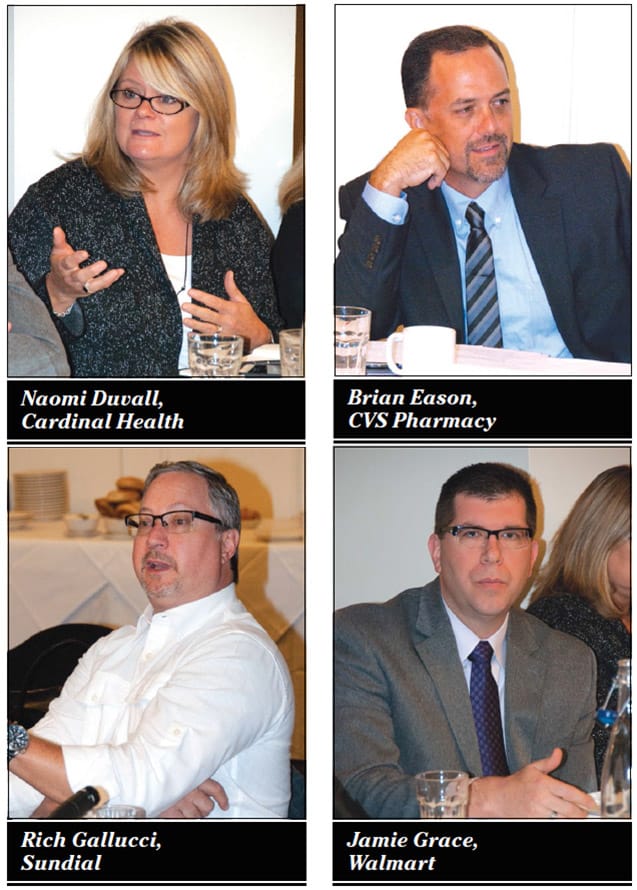
Mike Magarian, director of national accounts at Boehringer Ingelheim Consumer Health Care, said that as the father of two teenage daughters he sees firsthand how much information beauty consumers are getting from YouTube. “And it’s not just about pure products. It’s about the experience. It’s about blending products. It’s educational from the standpoint of applying makeup and how you use it.”
He likened the videos to a free consumer focus group, saying that “if you’re not paying attention to how these folks talk about products, how they use products, and how they’re being positioned to the audience that you’re trying to cater to, you’re missing the boat.”
Authenticity includes marketing, said Jamie Grace, senior director and merchandise manager at Walmart. He said he gets emails from a retailer recommending handbags “especially for you.” Errors like that push people to other retailers, he said.
Everything changed with the Millennials, according to Kim Sines, senior vice president of sales at Hello Products. They are simultaneously relying on technology and getting away from synthetic ingredients, she said.
Millennials necessitate a fresh start from retailers, she said. “Otherwise, you’re just going to constantly be changing incrementally, and the world is going to pass you by.”
She called for reframing how businesses are built. “Otherwise, we’ll become obsolete quickly because we’ll be good for Gen X and boomers, but there will be a whole lot of other people that we’re not going to talk to. And we need to be in the conversation where they’re consuming information. Digital and social are where they want to be marketed to. So it’s a question of making sure we’re in that dialogue with them, and present, and relevant, and authentic.”
MPG’s Van Howe said historically manufacturers had more sophisticated analytics than retailers, “but I feel like the world is changing.” Retailers, he noted, are increasingly harnessing the massive amounts of customer data they are collecting to drive frontline differentiation, like store-specific assortments that meet the unique needs of target consumers in specific neighborhoods or geographies.
Among retailers, Sines said, Amazon is getting ready to leapfrog the competition. That’s a huge concern that raises the question of how to build access to “new, exciting, dynamic, fresh products” that Millennials want ever faster, she said.
It’s not a matter of culling, she said. “It’s about the opening. It’s about the exposure. I’m sure you’ve heard about this Amazon Launchpad. It’s 4,000 entrepreneurial companies that Amazon is building up like crazy to give access to their millions and millions of consumers. It’s bringing that fresh excitement to the table with all the bells and whistles. That excites and terrifies me, because that’s what a lot of the new generation is looking for — like why they go to Beautycon.”
Matt Poli, vice president of marketing at the Emerson Group, described a “crazy convergence” of old school tactics including circulars, planograms and TV commercials with “this new world, and the new media of influencers.” His team tells him, “We’ve never been able to go to a retailer and say what 35 million influencer followers do for P-O-S.”
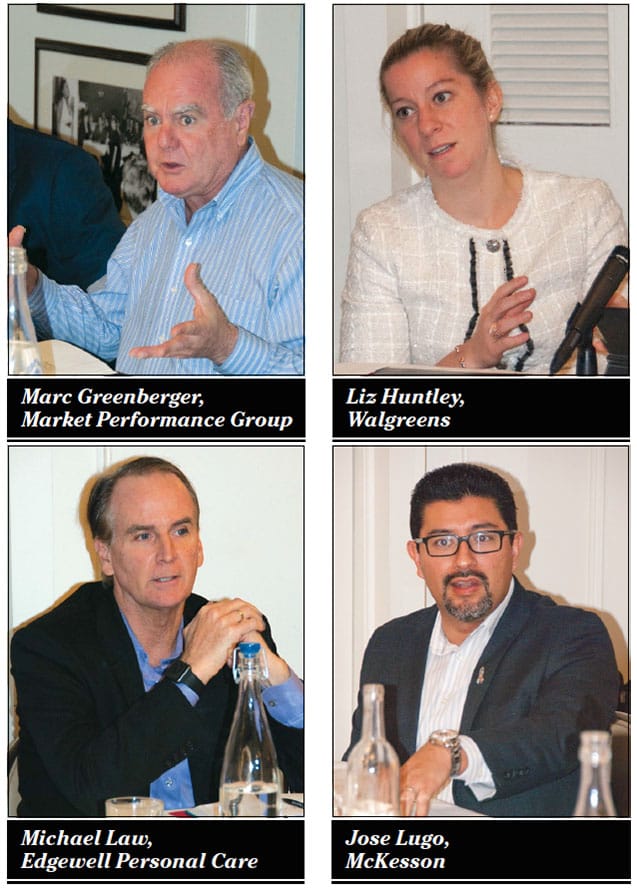
The reality is the future is here and it’s past. It just is. The internet used to be a place we went to. Now it’s woven into the fabric of our lives. And we just understand that purchase decisions happen on a train, happen in the aisle, happen at home.”
No consumer wants to be labeled a demographic, Poli said. “That ties into personalization, whether you’re male, female, black, white, young, old. A boomer and a Millennial can have the same behavior. In the digital world, you have the ability to talk to those two people differently, but have the same outcome.”
Email blasts can build broad brand awareness, he added. If 3% of blast recipients opened the email — which Emerson can measure — it achieved its objective, much like a $10 million network TV campaign, he said. “Thinking from the consumer backwards, and knowing what your goal is plays a big role.”
John Vayianos, vice president of sales for Profoot, said his company initiated a digital campaign about two years ago and has been very successful getting the right people from the right companies to work with it.
Measuring the impact is difficult, he said, but for second- and third-tier suppliers, that’s the best way to advertise and build awareness. “We’re in a category, foot care, in which almost everybody has a problem that needs a product. But just 22% of the population use foot care products. How else are we going to reach everyone else? It’s worked for us.”
Jeff Shirley, vice president of national accounts at iHealth, said it’s getting tougher and tougher to target consumers. But as the probiotic category continues to grow, iHealth has a significant amount scientific data with which it can target consumers and doctors. The company employs digital marketing, because more and more people want to access the research around its products, he said.
“Everybody is researching everything now,” he commented. “And we found that our consumer was going to Amazon and doing research, and then in many cases they were going to the brick-and-mortar store because they wanted to hold the package. They wanted to turn it over. As far as digital is concerned, I was told recently not to try to boil the ocean — to try to do everything for everybody.
“I can’t even go on Twitter anymore without getting targeted with something. I just want to shut it off sometimes. But I’ll tell you one thing for sure. That’s the way our digital strategy is. It’s targeted now, and we’re going after moms. Even my mother, who is 80, is now online, and I never thought that would happen, but we can target that person, as well. If you look at our strategy, you would think it was somewhat scattered, but it’s very, very targeted to an individual, and it’s targeted around what the science says the product will do.”
MPG’s Candelora said there’s a tendency to place e-commerce, digital and brick-and-mortar in silos. But, with the rise of the consumer economy and omnichannel retail, they all blend together, and retailer winners are going to be determined by how well they provide an integrated shopping experience for their customers. And this includes redefining the role of the store in the path to purchase. At Home Depot, for example, 42% of e-commerce orders are picked up in-store.

Skyers said 80% of ShopRite’s online consumers also shop its stores. “What we’re realizing is we need our manufacturing partner’s help to better understand these consumers, as they know best because they designed the brands,” he said.
“As an example, for a new hair introduction, Wakefern had an online campaign for pop-up studios in the stores. These pop-up studios created a real buzz around the brand,” Skyers explained. “And it just so happened that the stores that had the pop-up studios outperformed all other stores during the launch. This was one of the highest shares of launch we’ve ever had with this manufacturer, and it had nothing to do with item and price. It was all around a 360-degree consumer experience that started online and transitioned into a store experience. Leveraging our brick-and-mortar stores benefits the manufacturer, too, because there is a heavy investment to make sure their portfolio is seen and felt at store level.”
Michael Law, senior director of customer strategy and planning at Edgewell Personal Care, said that shopper engagement entails understanding the path to purchase and the role of each communication element along the way. “Part of targeting the right demographics in an evolving U.S. marketplace is not just product and assortment, but understanding how to connect with them across all of the communication points,” he said.
“The in-store environment can’t just be a place to replenish. You’ve got to have some level of experience, and I think that’s a huge untapped frontier for a lot of retailers. If there is no differentiation in your cereal aisle, your fem care aisle, your shave aisle, your soup aisle — if it’s just a replenishment experience — then you better have something else going for you as a retailer, or you’re probably going to eventually lose to somebody who does it better.”
Cheri Taylor, director of retail merchandising at Kinney Drugs, said the drug chain traditionally attracted a consumer who was a woman age 55 and older. “We have recently been focusing our marketing efforts on trying to attract younger consumers as well. But it has to compete with prestige retailers as well as dollar stores on the other end of the spectrum.
“So we’ve made an effoirt to alter our mix to ensure we are appealing to that younger consumer, for example, bringing in the cosmetic line e.l.f. We’ve redone our cosmetics wall, and most of the fixtures are now lit. We are focusing on an enhanced look for our weekly circulars as well as a big push for Facebook.”
When Kinney noticed some of its Facebook postings getting overlooked, it put up a few how-to videos for hair and makeup, with different kinds of applications. “Those are the types of things that were getting shared, and liked, and loved,” Taylor said. “It’s all about finding out what your consumer is interested in and zoning in on that.”
Huntley said Walgreens tries to focus on the consumer’s expectation for the chain overall “and make sure it’s reflected in all of our properties.” It’s vital to have a firm understanding of what consumers want from a retailer, she said, and to display that awareness online as well as in-store.
Cardinal Health Inc. director of category management Naomi Duvall said independent drug stores offer myriad retailers with “ultimate flexibility,” because they can change the profile of their business on a moment’s notice. “But with that comes a certain level of complexity for us to help with what they’re trying to stand for and be.”
With Health Mart, the focus has been more on health care than beauty, said Jose Lugo, senior marketing manager for CPG at McKesson Corp. “We’ve been successful because most of the work that we do is geared towards helping our independent customers become a health destination for the community. Even from the standpoint of merchandising, product selection and category management, that has been our focus — aligning with the suppliers that are strong in the health care side and ensuring that we’re not trying to be all things to all people. We pick the categories that we want to focus on based on our customers’ needs. And we see that with the number of SKUs that we carry across our network.”
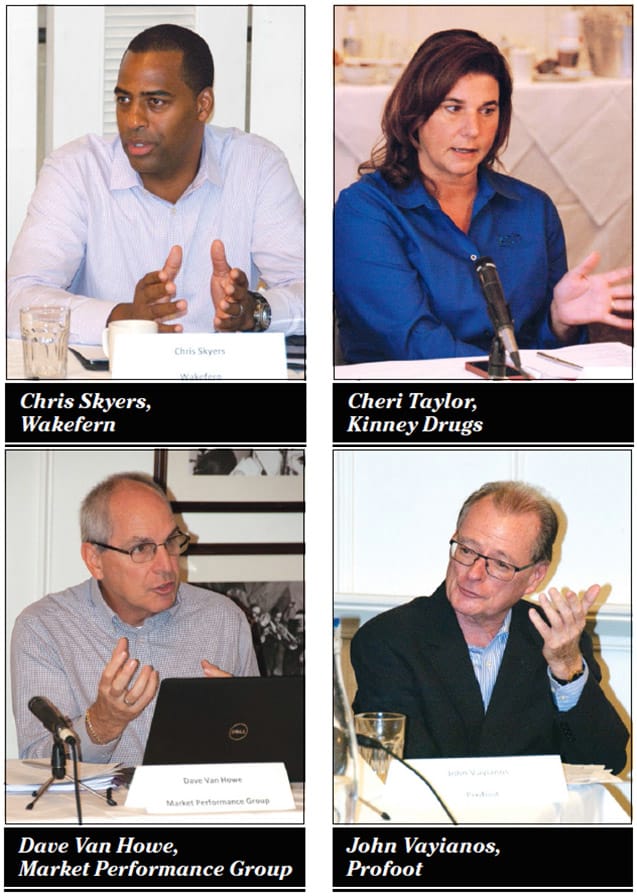
Through analytics, McKesson sees which items are moving, and which are not. But it also explores innovative items, researching what’s out there and what consumers are searching for, based on their feedback. “That’s another thing that we do quite often and quite well — through our field teams working directly with our pharmacies on a daily basis,” Lugo said. “It’s always about health care. ‘What additional services can I provide my patients, my customers? And then on top of that, maybe I can offer some beauty products or maybe I can offer some gifts.’ ”
With younger consumers online, he added, the biggest challenge is getting them on one or two platforms that McKesson, as a distributor, can fully support, as opposed to trying to manage hundreds of different setups.
Duvall said Cardinal Health’s research is increasingly revealing that caregivers are active participants in health care regimens and management. “To exclude them and not understand what intrinsic values they’re looking for in the retail experience is missing part of the equation of the aging boomer, especially as they start to have medical needs.
“As boomers age and start to experience more complex disease states, or they need more assistance, their caregiver is often helping them. Often they’re doing that digitally just like everybody else. So even in the independent space, where the focus has been on more traditional care, caregivers play a role. So we are building different avenues to help them harness and understand the decision tree, the processes, and the tools that those two different consumers might use.”
Sines said independents and Wakefern’s multiple owner-operators are in the community, “and they know what people are looking for.” These retailers are intent on “being true merchants and not just painting one picture. That’s where that regular retail — brick-and-mortar —will win because they’ll be standing for something that’s very relevant to shoppers.”
Candelora said that at Wakefern and independents the store manager knows just about every customer in the store, unlike at chains that rotate store managers more frequently. “The independent pharmacists understand their community, and there’s real power in that, in understanding what the store should look like.”
Poli said the days when families consumed their media after dinner are long gone. “Everyone sat around the sofa and watched network television, right? The reason an independent pharmacy can be competitive with a national chain is because the real differentiator for a consumer is the experience.
“Maybe the digital technology that a chain offers gives me convenience and saves me time, breeding my loyalty. But the playing field has been somewhat leveled because with technology we can sit here and consume media 24 hours a day. And so that independent has the ability to understand who the consumers are in his or her trading area and the experience that they want, and communicate with them.
“If there is a consumer out there who just says, ‘I want to go by price and I want a one-stop shop,’ she’s going to go to Walmart. She can get great pricing, fill a basket with all her needs, and be done. But as we look at this, it’s a question of what happens when we’re watching the Super Bowl on Facebook, because maybe in five to 10 years that will happen.
The ability to capitalize on the digital space to connect with the consumer in a given trading area is now a bargain, Poli said. “But in five to 10 years “the cost of doing business on Facebook is going to be what it costs to do business with CBS today. And that consumer is going to be on Facebook 100 times a day, versus fast forwarding a 30-second spot at 12 at night. There is a lot to be learned because that independent probably can drive a more personal experience for that consumer. If the boomer has the trust of the pharmacist, that’s enough for him to want to go to whatever that store is and pick up the things he needs on the way out, whatever the assortment is.”
Stephen Corrou, executive director of sales at Alcon, said leveraging the assets of a retailer to connect to the consumer and patient is critical. “Consumers will give you credit and be loyal if you’re educating them and you’re getting them what they need.”
Consumers see pharmacists as health care professionals, he noted. “So when they see that practitioner, that retailer gains credit for having that pharmacist there, and can leverage the asset. As a manufacturer-supplier, you’re going to look to your partners’ valuable assets. But in the end, I always go back to that consumer and patient. They make the decision whether they want to engage or disengage in the business, whatever you have to offer.”
Molnlycke vice president of O-T-C sales Janet Carter-Smith said the patient is today’s ultimate consumer. “As health care costs are rising, patients are increasingly more active participants in managing their health. Patients/shoppers are looking for transparency as they make health care descisions for themselves and their families. They’re looking for the best advice. They’re looking for where they can get their health care needs met with the best products at the best price. As they bear greater risk, they want greater involvement in the decision making while also demanding the best value for their health care dollar.” Pharmacists allow retailers to be “extremely focused on understanding that patient’s journey,” she said.
Summing up the discussion, MPG’s Greenberger said this is probably one of the most challenging retail environments of the last 30 or 40 years. Industry consolidation often begets confrontation as opposed to collaboration, he said, so it was refreshing to hear wholesalers and retailers asking manufacturers to partner with them by “bringing actionable consumer insights and recommendations to the table to help them exceed changing consumer expectations and drive growth.”
* To read the full Category Management Roundtable report, please see the Nov. 21, 2016, print edition of Chain Drug Review.

